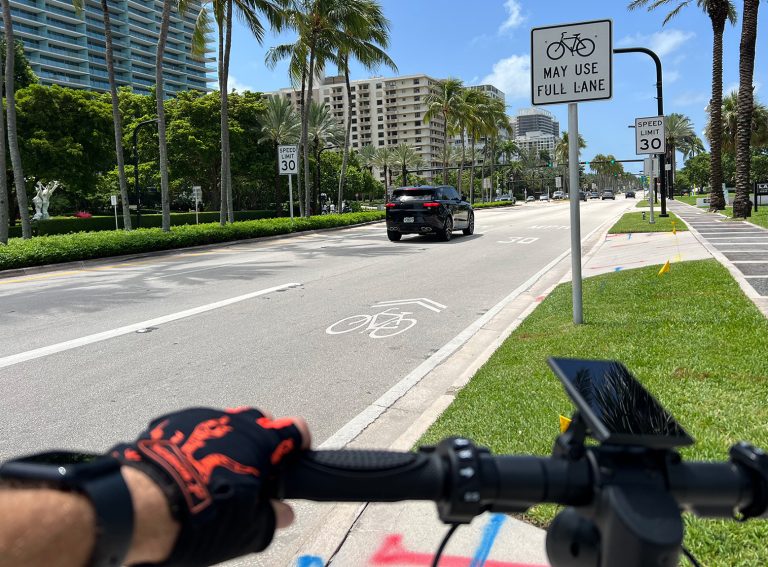In a new series of Opinion pieces, Zag’s asking micromobility leaders from across the industry to share their response to the recent evaluation report from the Department for Transport (DfT). Undertaken by Arup, it provides the most detailed analysis of the UK e-scooter trials to date.
Gareth James, Future Transport Zone Project Manager for Solent Transport shares his views on the report.
Like my Solent Transport colleagues and most others in the UK micromobility sector, I was pleased to see the DfT deliver their long-awaited e-scooter trials evaluation report as an early Christmas gift in December. At over a hundred pages, it was not as easy to digest as the usual festive fare, but that is testament to the huge amount of work that clearly went into producing some robust findings.
The evidence that e-scooter users with a disability are twice as likely (26%) as the overall user base (13%) to use e-scooters to travel to medical appointments is a welcome finding that is hard to detect in locally commissioned surveys, due to the smaller numbers involved. It was also heartening to see that users from ethnic minority groups and those on low incomes are more likely to be frequent users.
The reported UK-wide mode shift of 42% from walking was disappointingly high, and the 21% shift from private vehicles discouragingly low – we recorded 41% mode shift from cars and taxis in the Solent Future Transport Zone (FTZ) during the same period. However, we need to treat these early mode shift figures with caution. For example, the latest Portsmouth City Council survey indicates that slightly more trial users (17%) walk or cycle more as a result of the rental trial than those who do so less (15%). This is not surprising when you consider that almost all e-scooter trips begin with a walk to a parking bay, and that anyone choosing to leave their car at home will typically use a range of alternative modes to get around, but such nuance can easily be lost – sometimes wilfully – on those who focus solely on “last trip” question data.
Another thing to remember is that just about all the UK trials still have enormous scope for growth, much of which will be away from the urban cores where the operators initially focussed. The areas that many schemes are now expanding to have higher car usage, so if e-scooters can help chip away at that, we should see more of the right kind of mode shift and less away from buses or walking.
Gaining public sector support
While e-scooters may be a complex subject for those of us who work in the sector, at heart, there are surely only three criteria they must meet to earn (non-financial) public sector support:
- Are they replacing significant numbers of car trips, thereby helping decarbonise the transport system and reduce the harm caused by air pollution in our urban centres?
- Can they be managed in a way that minimises inconvenience and impediment to the general public, especially those with certain disabilities, such as wheelchair users and the blind?
- Are they safe for users and non-users?
The answer to the first question would seem to be yes, at least in the UK, where Voi’s latest car replacement rate of 39% dwarfs that of its other European markets. And while the jury remains out on the second question, it is clear that approaches like the one in the Solent FTZ, where we generally install physical racks and consult the public on every site, are making a positive difference.
For many, however, the safety question will understandably be the most important. There were already substantial limitations regarding e-scooter accident data, which George Beard of TRL did a nice job summarising in his recent Zag opinion piece, that currently render the “apples with apples” accident rate comparisons with other modes impossible.
Unfortunately, a significant limitation of the DfT’s report is that it relies on 2020-21 data, and this time lag only adds further uncertainty regarding accident rates. I therefore hope the DfT’s (under)statement that “the estimate should be treated with caution” is well-heeded by the media and transport policymakers alike.
As the report states, “more experience and training, particularly for new users, could help improve rental e-scooter safety”, and recent TRL research that Solent Transport commissioned on e-scooter accident data in the Solent FTZ would appear to support this. Having analysed data for Voi’s schemes in Southampton and Portsmouth, TRL observed a general downward trend in the casualty rate for both cities when comparing each month in 2022 with its corresponding month in 2021. This is intuitive, as the user base has become more experienced, with the DfT’s report noting that first-time renters were roughly three times more likely to report having a collision on their most recent trip. The “safety in numbers” effect may well be coming into play now too, with 14.5 million e-scooter trips (and that is without counting the private ones!) having been made by the end of 2021, and motorists’ awareness of them growing accordingly.
In summary, this report provides a welcome indication that well-managed e-scooter rental schemes can play a significant role in the urgent transition to a more sustainable transport system, and it will be illuminating to see (as soon as possible) whether the 2022 data confirms the encouraging findings and trends I have highlighted above. In the meantime, Solent Transport will continue to work with our local authority partners and the region’s e-scooter operators, Voi and Beryl, to build on this early success by eradicating irresponsible riding and maintaining the highest levels of parking compliance.








